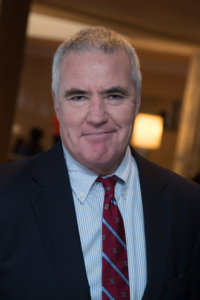
Jackson Williams, DPC Vice President of Public Policy
Fifteen years ago, the Institute of Medicine report, “Retooling for an Aging America: Building the Health Care Workforce,” warned of looming health workforce shortages due to demographic changes. Has the era foreseen by that report arrived? Media reports indicate numerous instances of hospitals declaring “contingency standards of care” or ordering ambulance diversions due to staffing shortages. Average emergency department visit times have risen to 160 minutes, up from 143 minutes in 2020, according to government statistics.
Medicare beneficiaries who are intermittent users of health care facilities will probably not know when care is not timely or delivered to standards. But patients with ESRD, who visit their dialysis facilities 3 times per week over many years, are likely to recognize when something is amiss. Dialysis Patient Citizens surveyed members in 2023 about their experiences. We found:
- 62% of patients reported that the recent labor shortages had impacted their care: 43% said that staff turnover disrupted their care; 28% reported delays to their treatment; and 7% reported that they had to change shifts or facilities.
- In 2013, in response to a question about wait times at facilities, the same proportion of patients, 14%, reported increases in wait times as decreases in wait times. This year, 24% report increases in wait times and only 11% reported decreases.
- In 2013, we asked patients whether “in the past year, has time spent with health care providers (nurses, technicians) in your primary dialysis center increased, decreased, or stayed the same.” Ten years ago, only 13% reported the time had decreased; this year it was 26%.
This year’s Medicare payment rule only increased reimbursements to dialysis clinics by 1.7%, despite labor costs that have risen by 9.7% over the past two years. Complicating matters further, calculation errors the past two annual cycles have left payments 4 percentage points below what they should be. This makes it harder for dialysis facilities to hire staff. Hospitals that depend on Medicare are in the same boat.

The situation is not expected to improve, as the pool of workers available for health care jobs is shrinking. Over the next decade, the number of people of working age in the United States will increase by only 3 million (∼1%) while the 65-and-over population will rise by 17.5 million (30%), according to World Bank projections.
With the trend toward work-from-home, jobs that are challenging and require in-person performance at fixed hours in the workplace will likely require a premium in salary over those that do not require commuting.
It is not clear if Medicare’s traditional price-setting processes are agile enough to adapt to labor scarcity. For both hospitals and dialysis clinics, payments are lagging changes in the labor market.
Policymakers must also begin to consider the impact that income inequality will have on health workforce and health care access.
As one expert has noted, disparities in buying power can divert essential resources from the poor [as] the well-off bid away resources and opportunities from the poor. Examples where this is already taking place include “concierge” medical practices and physicians concentrating on cosmetic procedures.
Currently, 69% of the wealth in the United States belongs to just 10% of the population. The lowest 50% of households own just 2.4% of total wealth.
If providers reliant on Medicare reimbursements can’t compete with employers able to draw revenue from that 10% of the population holding most of the wealth, manpower could migrate to work with less social utility, or a parallel health care system could emerge to serve the well-off.
DPC will continue to raise these issues with policymakers.




